Refrigerator Buying Guide
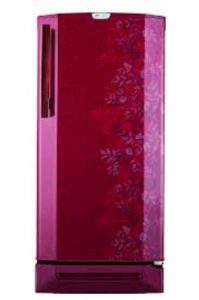
Refrigerator is a basic necessity in every home. The choice of refrigerator brand, capacity and model depends on various factors like number of people in your house, food habits, whether you do shopping on weekends only, storing beverages and beer. A two member family can need a small or mini refrigerator anywhere between 50 to 200 litres.
TYPE OF REFRIGERATOR
The types of refrigerator include – direct cool, cyclical and frost-free refrigerator.
Direct Cool refrigerators
Direct cool fridges only come with single door and the maximum capacity is 350 litres. They are not as effective as frost free refrigerators in keeping fruits and vegetables fresh. The direct cool refrigerator needs lesser eletricity and hence is cheaper in running. The service costs are also cheaper.
They also need to be defrosted, the options are manual or automatic or semi automatic.
Frost Free refrigerators
Frost free refrigerators do not need defrosting as cool air is continuously circulated and there is no ice build-up. Their longevity is more and technically also they are superior to direct cool fridges.
They consume more power than direct cool refrigerators as ice is not formed and hence running costs are more.
Frost free refrigerators are easier to maintain, maintain food fresh for longer duration and have less odor. Frost free fridges have two or more doors as the chiller unit needs to be separate.
Cyclic cooling
These fridges have a unique cyclic defrost system with auto evaporation and hence save around 30% electricity as compared to frost free models. However these are not very common and not suitable for home use as they are mostly in capacity above 350 litres..
REFRIGERATOR CAPACITY
These are typical recommended fridge capacities based on your family size:
| Size of Family | Refrigerator Capacity in litres |
| 1 | 200-230 |
| 2 | 260 |
| 3 | 290 |
| 4 | 300 |
| 5 | 350 |
| 6 | 400 |
| 7 | 450 |
| 8 | 500 |
| 9 | 550 |
| 10 | 600 |
| 11 | 650 |
| 12 | 700 |
Single Door Refrigerators
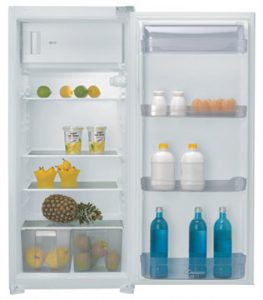
These are conventional refrigerators which come with a single door. The upper portion is a freezer, the middle portion is a refrigerator and the bottom portion has a vegetable bin. Single-door refrigerators are entry-level refrigerators.
Pros
- Is available in smaller sizes for smaller usage
- Fits in a small space
- Freezer section is more efficient
- Ideal for small offices/clinics and grocery stores
Cons
- Manual defrosting required twice in a week. If defrosting is not done in time, the defrosting water tray might spill, causing a mess
- Not available above 300 ltrs
- Since all three sections (freezer, refrigerator and vegetable bin) are together, odour mixture in the food is common
- Heat-exchanging pipes/coils are visible (not concealed) in most of the single-door refrigerators.
Double-door refrigerator
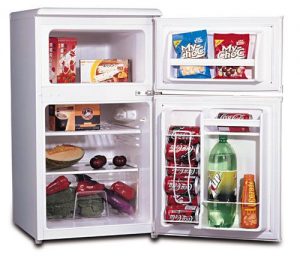
Out of two doors, one door is for the freezer section and the other is for the refrigerator and vegetable sections. They either have a freezer section on top and refrigerator and vegetable sections at the bottom or vice versa. They start from 200 liters and go up to 660 liters. These are the highest-selling refrigerators and are in mid-price range.
Pros
- Bigger vessels/ beverage bottles can be accommodated, depending upon the capacity of the refrigerator
- Available in wired shelves (weight-holding capacity: 90 kg), acrylic shelves (weight-holding capacity: 40 kg) and toughened glass (weight-holding capacity: 90 kg)
- Refrigerators with acrylic/ toughened glass will have a unique temperature in each compartment
Cons
- Deodorizer feature not available in smaller sizes
- Not available in smaller sizes
- The vegetable section is smaller compared to a three-door refrigerator
- If the refrigerator section located in the lower part, you have to bend down to get the vegetables.
Three-door refrigerator
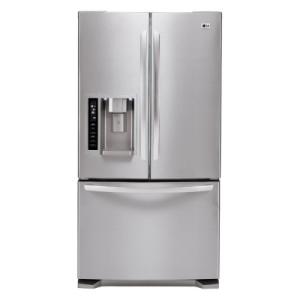
A three-door refrigerator has one door for the refrigerator section, one for the vegetable section and another for the freezer section. In this type of refrigerator, the refrigerator section is on top, the vegetable section is in the middle and the freezer section is at the bottom. These refrigerators start at 300 ltrs and go up to 450 ltrs. This type of refrigerator is preferred by vegetarian families as the vegetable section is quite convenient to open. It is in the mid-price range.
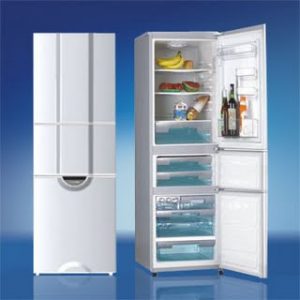
Pros
- Since the refrigerator and vegetable sections are at the top, you don’t have to bend down too much
- Odour mixing is avoided completely as the three sections are separate
- Some three-door refrigerators come with automatic ice dispensers
- These refrigerators have a thin outer body so they take up less space
- The vegetable section is bigger compared to other refrigerators and is generally divided into two parts
Cons
- Limited space to keep bigger beverage bottles
- Bigger vessels cannot be accommodated
- Generally comes with acrylic shelves that can take only 40 kg
Four-door side-by-side refrigerator
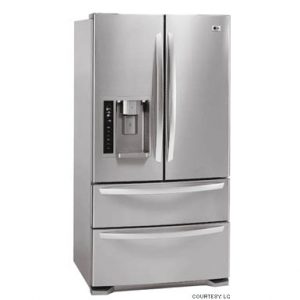
A four-door side-by-side refrigerator is similar to a two-door side-by-side refrigerator, more like a cupboard with left and right halves, except that both these halves also have two doors. The entire top half is the refrigerator and vegetable section and the entire bottom half is the freezer section. It comes only in 660 ltrs. Like the two-door side-by-side refrigerators, these also are high-end models. Since these are high-end refrigerators, the price range also is quite high.
Pros
- All shelves are made of toughened glass that can hold a weight of 90 kg
- Bigger vessels/ beverage bottles can be accommodated easily
- Comes with a water dispenser, but does not need to be connected to a permanent water connection, so no permanent plumbing is required
- You don’t need to open the entire section to take out a particular item
Cons
- Not available in smaller sizes
- Very bulky and hence difficult to move around
- Does not come with an ice cube dispenser.
REFRIGERATOR FEATURES
Type of shelves
There are three types of shelves – wired, acrylic and tempered glass. Wired shelves are mostly used in entry level fridges. The tempered glass shelves can hold maximum weight and are break resistant – they are used in higher end refrigerators.
Clean back
Clean back refrigerators have condenser coils at the bottom of the fridge. These look better than the coils at the back of the refrigerator. These also makes cleaning the refrigerator easy.
Noise
Check the noise level of the fridge, good ones will not make too much noise.
Ice maker
The freezer typically comes with a specific ice maker section. You will get ice cubes here.
There are ice and water dispensers also which let you have ice or cold water without opening the fridge door.
Quick-freeze compartment
A quick-freeze compartment in a fridge is available as a small colder compartment within the freezer or as a knob that allows you to adjust the temperature of the freezer. This is very useful to have ice available in a very short notice.
Separators
A separator helps to store more fruits and vegetables and prevents the softer ones from being crushed under heavier ones. This essentially helps to organize the refrigerator better.
Moisture and humidity control
Moisture and humidity controls in a refrigerator will help fruits and vegetables to remain fresh for longer periods of time.
COMPARISON OF REFRIGERATORS
| Feature | Single Door | Double Door | 3 Door | 2 door side by side | 4 door side by side |
| Capacity | 50-300l | 200-660l | 300-450l | 550-810l | 660l |
| Defrosting | Manual | Automatic | Automatic | Automatic | Automatic |
| Ice / Water Dispener | No | No | No | Yes | Water dispenser only |
| Permanent Plumbing | No | No | No | Yes | No |
| Deodorizer | No | Yes | Yes | Yes | Yes |
| Shelves | Wired / Acrylic | Wired / Acrylic / Toughened Glass | Wired / Acrylic / Toughened Glass | Toughened Glass | Toughened Glass |
| Freezer | Small | Medium | Medium | Big | Very big |
INVERTER TECHNOLOGY FOR SAVING ENERGY
Energy efficient refrigerators are made with inverter compressors. These compressors are energy saving and environment friendly. These also reduce size of refrigerator and reduce noise. The technology allows system to detect subtle temperature changes and adjust automatically.
By using as much power as needed, the inverter technology cuts power usage by almost 20%.
The advantage of inverter controlled refrigerators is that once when hot food is placed in the fridge, the compressor starts to works to bring the temperature down in order to keep the food fresh. Once the temperature goes down the inverter acts smoothly to maintain the temperature in lower frequency, thus the compressor stays quieter and food remains fresh.